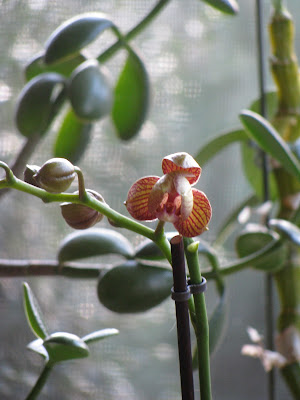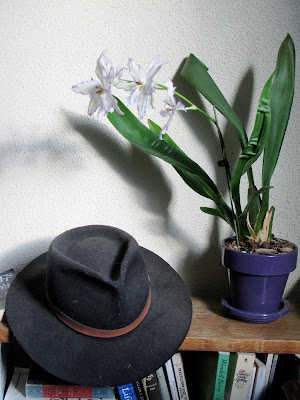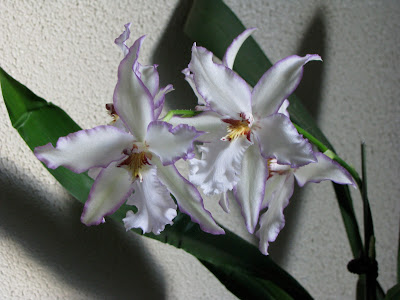To Bloom Again
Before I met My Baby, I had never known anyone who could bring an orchid to blossom a second or third time after the initial bloom.
My Grandma was great with African violets, and always had lush pots of the frilly pink and purple blooms on her windowsill. But that’s not quite the same as an orchid.
My Baby just has a way. His secrets seem to be along the lines of doing not much more than enjoying the presence of the plants. He doesn’t incessantly pick and pinch away at dead or droopy leaves, or force-feed and water them. He just delights in them. For him, it seems to be more about letting the blooms emerge, rather than making them emerge.
It’s pretty hard to resist a man who has a window ledge designated to the sick, the frail and the straggly, giving those plants that I’d be tempted to toss one last chance in the best sun the house has to offer.
Just try to resist a man who will gather up all the discounted stragglers at the florist and bring them home. They bloom again and again. Who wouldn’t? And if they don’t? He appreciates their grand effort even if it doesn’t amount to anything showy.
It was three years ago last week that I met this treasure of a man and entered into the presence of his healing and nurturing environment.
And I bloom. Again.
Vanilla beans come from orchids, and have quite the romantic story as well. In the orchid family the vanilla orchid genus produces about 110 species. The pretty white, green or greenish-yellow vanilla flowers open only once. The fully formed bloom opens in the morning, and closes at mid-afternoon never to open again. If pollination hasn't occurred in that short window of time, the flower will soon wither and fall away. Most commercially produced vanilla, therefore, is hand pollinated.
What we call the bean is actually a fruit which takes 8 or 9 months to fully ripen, nearly as long as it takes a human baby to develop. All this time and effort makes me know that the dollar or so I spend on one fragrant and flavorful bean (fruit) is quite a bargain.
Dorie Greenspan writes a lovely piece on the coveted vanilla bean that you'll enjoy reading here. I've found several online sources for vanilla beans that are quite reasonably priced and by virtue of their affordability encourage their use, rather than hoarding the costly lone bean in purchased in a vial from the spice section at the local market until it is a dried out, lifeless stick. My old favorite source is apparently no longer in business, so until I find a source to whose reliability I can attest, I encourage you to do an internet search and give one or two a try.










lovely pictures we can't wait for spring too
ReplyDeleteLoved this post
ReplyDeleteGreat story.
ReplyDeleteAlways with a neat story. I am pretty good with plants, but with a cat in the house mine are all outside and only seasonal then.
ReplyDeleteI didn't know where vanilla beans come from so I learned something new today. Thanks!
Jason
The flowers are beautiful. We keep getting them and they keep dying on us :D.
ReplyDeleteLovely lovely post
ReplyDeleteTrue beauty is looking at the natural. I love how detailed these amazing plant life's can be. Gorgeous!
ReplyDeleteBTW, I have an award for you on my site. I love reading your posts for the obvious. (being from the same state and all) but you always seem to bring a little something different I would have never thought of. Plus I love your wine pairing ideas:)
Your orchids and pictures are lovely! I need to send you my orchids as they are just not doing too well here. At my previous house, they were flowering twice a year.
ReplyDeletewhat a lovely post and your orchids are so beautiful.
ReplyDeletedid not know about the vanilla beans, thanks for sharing that info.
Awww. I loved this post, Pam. Man, what a catch you've got. Of course, I don't need to tell you that;)
ReplyDeleteI've often wondered about how a vanilla bean comes into being. That is really cool. I can't believe the window of time is so short! Amazing post.